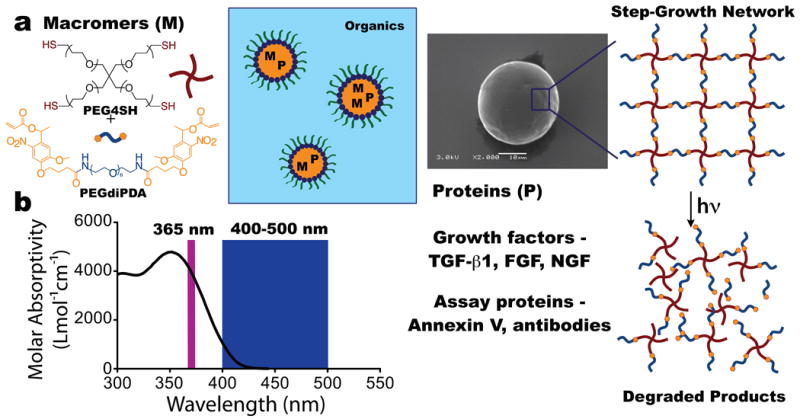Figure 1.

Photodegradable microparticle fabrication. a. Photodegradable particles were synthesized by reacting PEG4SH with PEGdiPDA via base-catalyzed Michael addition in an inverse-phase, suspension polymerization. The aqueous phase, consisting of macromers, the base catalyst triethanolamine, and the target protein, was suspended in an organic phase of hexanes and stabilized by surfactants. Upon completion of the polymerization, the particles were purified via centrifugation resulting in spherical particles, as imaged by SEM. The reaction of the PEG4SH with the PEGdiPDA forms a step-growth network, and owing to the presence of nitrobenzyl ether (NBE) moieties in the PEGdiPDA, the network degrades in response to light. b. The NBE moiety absorbs light strongly at 365 nm with a tail out past 405 nm. This allows both single photon irradiation at 365 nm or 400-500 nm to be used to degrade the particles, as well as two-photon irradiation using a wavelength of 740 nm.
